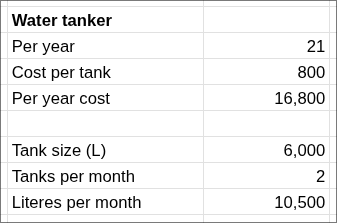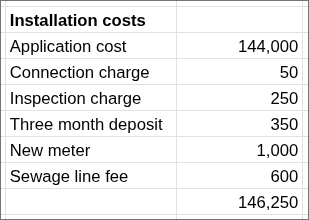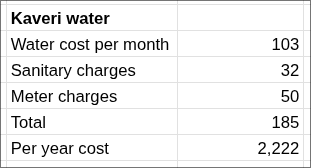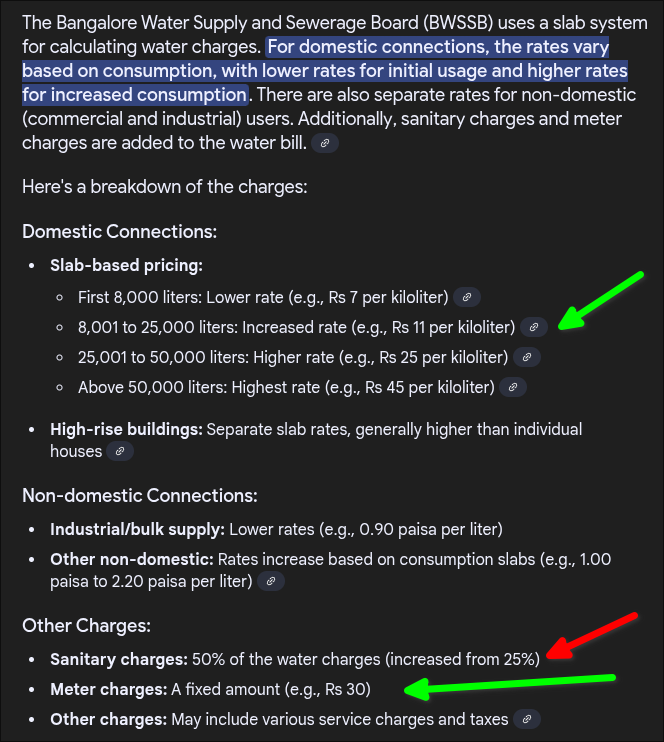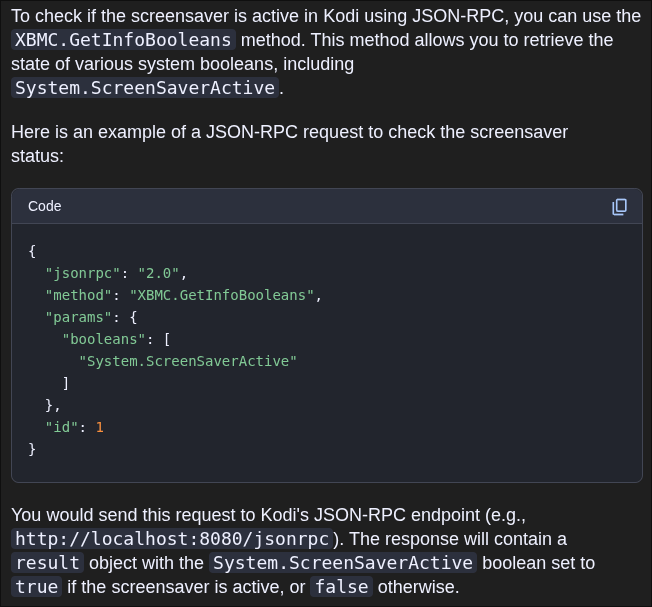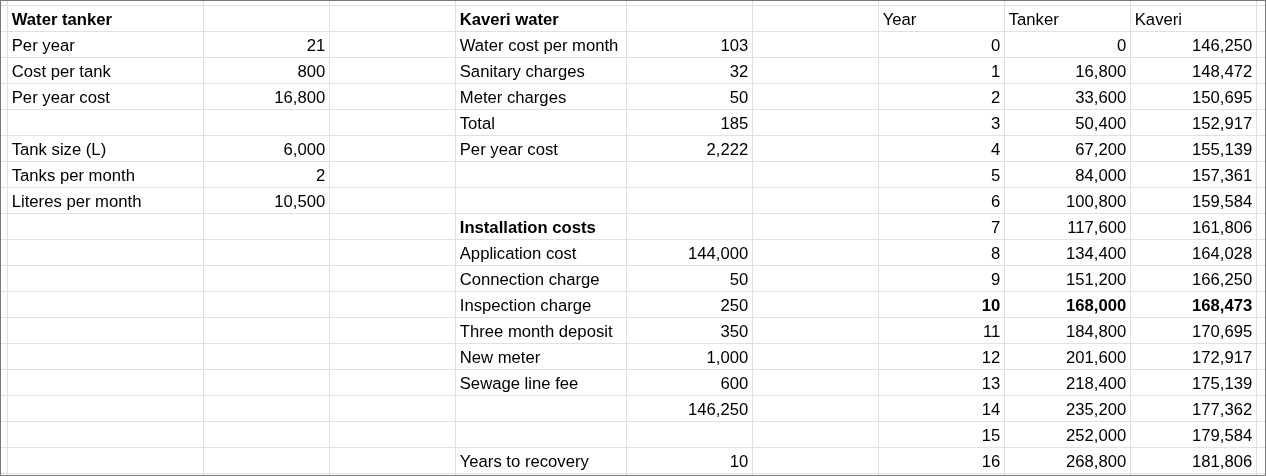Kaveri Water vs Water Tanker
If you are not from Bangalore, you may not find this useful. Currently, the water source for our household consumption comes from water tankers. Every few weeks we get a 6000 liter water tanker to fill our sump. The water from the sump is pumped to an overhead tank for our water needs. Recently our layout was being connected with Kaveri water pipes and we have the option of choosing Kaveri water or continue with water tankers. As usual, I have to make a spreadsheet to check which is more financially viable :).
For those of you who don’t know, the water tanker source their water from borewells and distribute to houses. Since I have meticulously recorded every expense since my retirement in 2018, I know exactly how many times we order water. I checked my records and generally we need 16-17 tanks a year, but our highest usage was 21-22 tanks during covid period. During that time, we did not travel anywhere and our parents were with us throughout the couple of years. So naturally the consumption was highest at that time.
Currently, a 6000 liter tank of water costs Rs. 800 where we live. Assuming 21 tanks per year on average, the cost comes out to Rs. 16,800/year. We use about 10,500 liters of water per month. Here are details:
Now, if we were to go with a new Kaveri water connection, the cost breakup is as follows
Remember, that is the one time installation cost. There are monthly charges in addition to the above which are shown below
I did not mention bribes in either of the above expenses. This is India and India does not run without bribes. I talked to a few folks and the bribes mentioned vary quite a bit, so I did not yet write them down but those will have to be accounted for. Initially I thought the bribes are only for the installation, but it seems bribes are required on an ongoing basis if you want smooth operation of the water supply. Read that however you like :).
Interesting AI side note
While I don’t use AI tools that much, they appear automatically for me. You see, I use Google search to do most of my research and since AI is now integrated into Google search, some AI snippets appear. I used some of the information from there, but checked the sources to make sure. Most of the information was correct (while not up-to-date), one bit of information regarding sanitary charges was not correct. I am not sure how the AI came up with the number since there was no reference link provided. I highlighted them below.
Anyway, I did not blindly use that information because, you know, AI hallucinations and I was not sure how grounding is configured for the results. As I mentioned before, the information provided is not fresh. The prices have been revised on April 1, 2025 and the results did not reflect it. So I went to the authoritative source (BWSSB) to get the latest charges.
While AI did not fare so well in this particular case, there were other times when it was very helpful. For example, I am writing an app (hobby project) which uses JSON RPC to fetch some data from Kodi (my media center) server. I wanted to know if a screensaver was running on it. But if you look at the documentation, it is not easy to find the right API. But Gemini did know it and wrote perfectly working code. It made my life super easy.
End of side note.
Using this information, I checked how long it would take for me to recover my investment into Kaveri water connection assuming the prices of water tank and Kaveri water will not increase (just to keep things simple). From my calculations, it will take 10 years to recover my investment, that too assuming I have not invested my initial one time expense in Kaveri connection.
It already does not make any sense to get Kaveri connection. Now if I added in the fact that I can invest the approximately Rs. 1.5L of initial investment, it would take almost 20 years to recover. Yet, that is not the only angle to look at things.
The quality of water is hard to know, but we at least know that the borewell water has more dissolved solids (water hardness). Using our TDS meter, it usually hovers around 500. Where as Kaveri water is supposed to fare better.
Another difference is that the water we receive from Kaveri is treated in a water treatment plant before pumping out so is more potable. However, the downside is that there may be too much chlorine which is harmful. So either the activated carbon in my filter needs more frequent changing or I have to boil the water before drinking.
Kaveri water supplied by BWSSB failed BIS testing earlier, but seems like it passed in the recent tests. So that gives some hope.
Yet, people contaminate not just ground water but even BWSSB pipelines, so there is still that fear. I guess even bore water could be contaminated but not to this extent.
At this point I am leaning towards Kaveri water in spite of the fact that it does not make financial sense and also with the fact that I hate paying bribes. May be the water quality will compensate for it (which again is not given).


